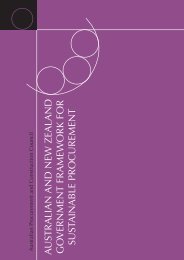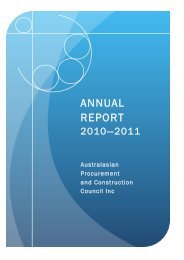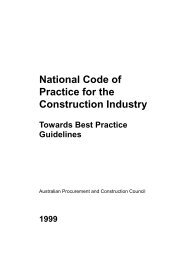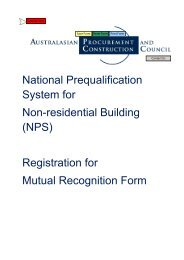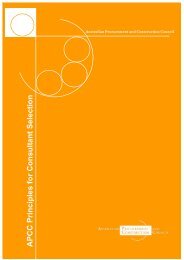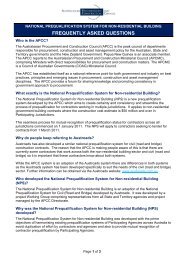Improving Security of Payment Building and Construction Industry
Improving Security of Payment Building and Construction Industry
Improving Security of Payment Building and Construction Industry
- No tags were found...
You also want an ePaper? Increase the reach of your titles
YUMPU automatically turns print PDFs into web optimized ePapers that Google loves.
5. Pro<strong>of</strong> <strong>of</strong> <strong>Payment</strong> Page 67National Public Works Council Inc<strong>Improving</strong> <strong>Security</strong> <strong>of</strong> <strong>Payment</strong> in the <strong>Building</strong> <strong>and</strong> <strong>Construction</strong> <strong>Industry</strong>5.8 Other Issues ConsideredSet out below are the issues that the Brief required us to consider in respect <strong>of</strong> pro<strong>of</strong> <strong>of</strong>payment.5.8.1 The possibility <strong>of</strong> the Head Contractor exerting pressure on Subcontractors to signan acknowledgment, even though the Subcontractors may not have been paid orhave only been partly paidIn reality, neither pro<strong>of</strong> <strong>of</strong> payment approaches detailed in the Brief (ie QBA or theVCB Approach) are able to control a Head Contractor from exerting pressure onSubcontractors to sign such an acknowledgement. These types <strong>of</strong> unethical behaviourcan only be controlled through education <strong>and</strong> through implementing sufficientdeterrents for undertaking this action(s).Whilst the pro<strong>of</strong> <strong>of</strong> payment approaches identified in the Brief provide differentmechanisms for ensuring payment is made to appropriate parties down the contractualchain, their interrelationship with alternative dispute resolution is the same. This isbecause <strong>of</strong> the premise that underscores the alternative dispute resolution procedure,namely, that there is a dispute already in existence.Thus, in addressing the issues for consideration, there has not necessarily been aconscious attempt to create a dichotomy for the purposes <strong>of</strong> the discussion concerningthe application <strong>of</strong> alternative dispute resolution. Rather, we have focussed on thepoint <strong>of</strong> relevance common to both models in the dispute.When speaking at the CIDA National Conference in May 1995 (p314), John Pilley(<strong>Construction</strong> <strong>Industry</strong> Engineering Services Group) had some anecdotal evidenceregarding fabricated disputes. Mr Pilley had the following to say:"There are plenty <strong>of</strong> instances that I have seen in Victoria where the HeadContractor has not made payment <strong>and</strong> then has invented a dispute <strong>and</strong> there isno doubt that he has invented the dispute in order to say that 'I do not owe themoney <strong>and</strong> that is where I can truthfully say in a statutory declaration that I donot owe any money'. He manufactures the dispute in order to be able to swearto that statutory declaration."Where the Head Contractor exerts pressure on Subcontractors to sign anacknowledgment <strong>of</strong> pro<strong>of</strong> <strong>of</strong> payment, notwithst<strong>and</strong>ing that those Subcontractors maynot have been paid or only partly paid, alternative dispute resolution will not providea panacea for this situation as (in reality) there is no dispute to be resolved. Indeed,the Head Contractor <strong>and</strong> the Subcontractors have settled their dispute even though theSubcontractor may not be entirely happy with the situation.The only way to sort out the problem <strong>of</strong> Head Contractors exerting pressure onSubcontractors to falsely sign acknowledgments <strong>of</strong> payment, is to provide amechanism that prevents this situation from occurring in the first place, <strong>and</strong> even thisis only likely to limit the level <strong>of</strong> the problem. Some suggested solutions to this


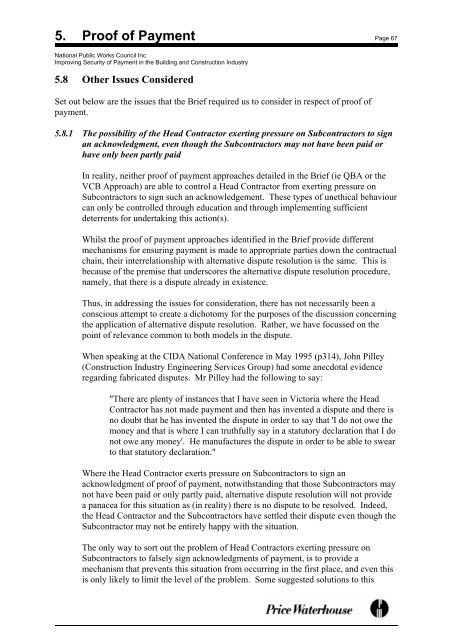
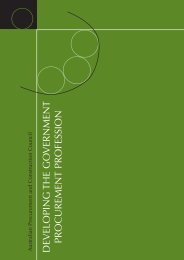
![NATIONAL COST ADJUSTMENT PROVISION EDITION 2 [NCAP2]](https://img.yumpu.com/48266135/1/184x260/national-cost-adjustment-provision-edition-2-ncap2.jpg?quality=85)

